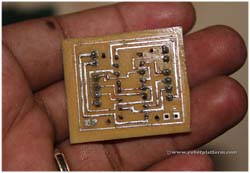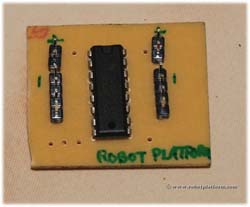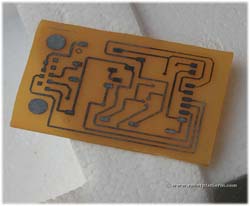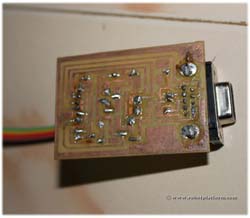PCB Etching tutorial
Adding components and soldering
In the image you can notice that the components are soldered. If you wish, you can run solder across all the tracks which help to cover any breaks in tracks. It can also resist oxidation over those exposed copper tracks.
Etching a board is so easy that I never consider using those perforated boards. But if you are starting with electronics, it is always advisable to begin with a bread board, then to a perforated board and finally into etching.
The below images shows an AVR programmer developed using the same etching method.
Other boards made using similar technique
Step-by-Step PCB Etching Video tutorial
http://www.youtube.com/watch?v=kylGBBOfFc4
Tutorial index:
Do you have anything to say?
Visit the Forum to discuss, learn and share anything related to robotics and electronics !!












